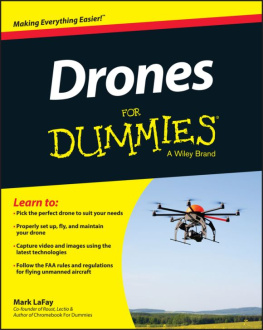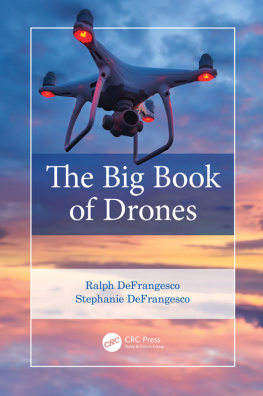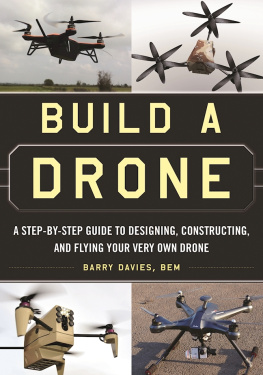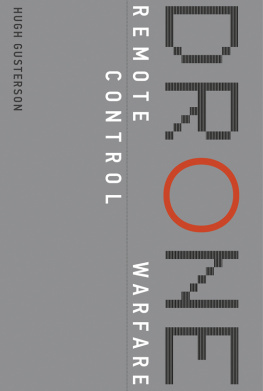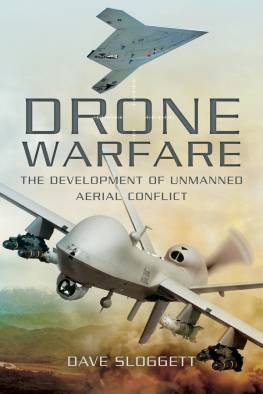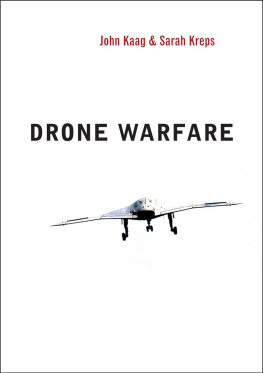Advance Praise for A Theory of the Drone
In Chamayous razor-sharp telling, drones fundamentally transform the psychic, moral, and physical space and art of killing. But it is his theory of the drone that is even more chilling. It demands that we consider the emergence of a new ethical and political norm of war that is neither war as we know itnor peace. The principle of immunity for the imperial combatant rests on a twisted logic: On the one hand is the achieved capacity of the drone operative (one of many newly installed masters of lethal surveillance) to move throughout a day between killing fields and coffee breaks, between combat zones and home. On the other hand is the enlisting of a citizenry to accept the moral obligation to kill. In this compelling analysis, Amnesty Internationals classing of drone strikes as war crimes would be only part of the story. Chamayous critical point is that drones alter the very terrain and logic of who deserves to die and implicates us all.
Ann Stoler, Willy Brandt Distinguished University Professor of Anthropology and Historical Studies at the New School for Social Research
Also by Grgoire Chamayou
Manhunts: A Philosophical History


The New Press gratefully acknowledges the Florence Gould Foundation for supporting publication of this book.
Copyright 2013 by La Fabrique Editions, 64 rue Rebeval, 75019 Paris, France
English translation copyright 2015 by The New Press
All rights reserved.
No part of this book may be reproduced, in any form, without written permission from the publisher.
Requests for permission to reproduce selections from this book should be mailed to: Permissions Department,
The New Press, 120 Wall Street, 31st floor, New York, NY 10005.
Originally published in France as Thorie du Drone by La Fabrique Editions, Paris, 2013
Published in the United States by The New Press, New York, 2015
Distributed by Perseus Distribution
LIBRARY OF CONGRESS CATALOGING-IN-PUBLICATION DATA
Chamayou, Grgoire.
[Thorie du drone. English]
A theory of the drone / Grgoire Chamayou ; translated by Janet Lloyd.
pages cm
Includes bibliographical references and index.
ISBN 978-1-59558-976-7 (e-book) 1. Drone aircraftMoral and ethical aspects. 2. Military ethics. I. Lloyd, Janet, 1934 II. Title.
UG479.C53 2013
The New Press publishes books that promote and enrich public discussion and understanding of the issues vital to our democracy and to a more equitable world. These books are made possible by the enthusiasm of our readers; the support of a committed group of donors, large and small; the collaboration of our many partners in the independent media and the not-for-profit sector; booksellers, who often hand-sell New Press books; librarians; and above all by our authors.
www.thenewpress.com
Composition by dix!
This book was set in Walbaum MT
2 4 6 8 10 9 7 5 3 1
In memory of Daniel
CONTENTS
A THEORY OF THE DRONE
That night, shortly before dawn rose in the Afghan mountains, they had noticed unusual behavior on the ground.
PILOT: Can you zoom in a little bit, man, let em take a look?
SENSOR OPERATOR: At least four in the back of the pickup.
PILOT: What about the guy under the north arrow? Does it look like hes holdin something across his chest?
SENSOR OPERATOR: Yeah, its kind of weird how they all have a cold spot on their chest.
PILOT: Its what theyve been doing here lately, they wrap their [expletive] up in their man dresses so you cant PID [positively identify] it.
The pilot and the sensor operator scrutinize the scene on a monitor. They wear khaki uniforms with a shoulder badgean owl with outstretched wings against a red background and flashes of lightning in the talons. Wearing earphones, they are sitting side by side on fake-leather seats. There are warning lights everywhere. But this place is unlike an ordinary cockpit.
They are shadowing something thousands of miles away. Images of vehicles, captured in Afghanistan, are relayed by satellite to Creech Air Force Base, not far from Indian Springs, Nevada. In the 1950s, this was where the American nuclear tests were carried out. The atomic mushroom cloud rising in the distance could be seen from Las Vegas. Today, drivers on Highway 95 regularly catch sight of other shapes above their heads: oblongs with rounded heads, like fat, white blind larvae.
Creech AFB is the cradle of the U.S. Air Force fleet of drones. The soldiers call it the home of the hunters. But the antiwar organization CODEPINK calls it a place of disbelief, confusion and sadness.
The work here is extremely boring. Men pass whole nights watching a screen on which, for the most part, appear unchanging images of another desert on the other side of the planet. Eating Doritos and M&Ms, they wait for something to happen: months of monotony and milliseconds of mayhem.
In the morning another team will come to take over the controls of the apparatus. The pilot and sensor operator will return to the steering wheels of their SUVs, which will take them back to their wives and children in a peaceful residential suburb of Las Vegas, forty-five minutes away.
The passengers traveling in three vehicles that, a few hours ago, left their little village in the province of Daikundi have no idea that for quite some time now, dozens of eyes have been watching them. Among those invisible spectators are not only the pilot and sensor operator but also a mission intelligence coordinator, a safety observer, a team of video analysts, and a ground force commander, the last of whom will eventually give the go-ahead for an aerial strike. This network of eyes remains in constant communication with one another. And on this night of February 20, 2010, their conversation is, as usual, recorded:
00:45 GMT (05:15 in Afghanistan)
PILOT: Is that a [expletive] rifle?
SENSOR OPERATOR: Maybe just a warm spot from where he was sitting. Cant really tell right now, but it does look like an object.
PILOT: I was hoping we could make a rifle out, never mind.
...
01:05
SENSOR OPERATOR: That truck would make a beautiful target. OK, thats a Chevy Suburban.
PILOT: Yeah.
Next page



